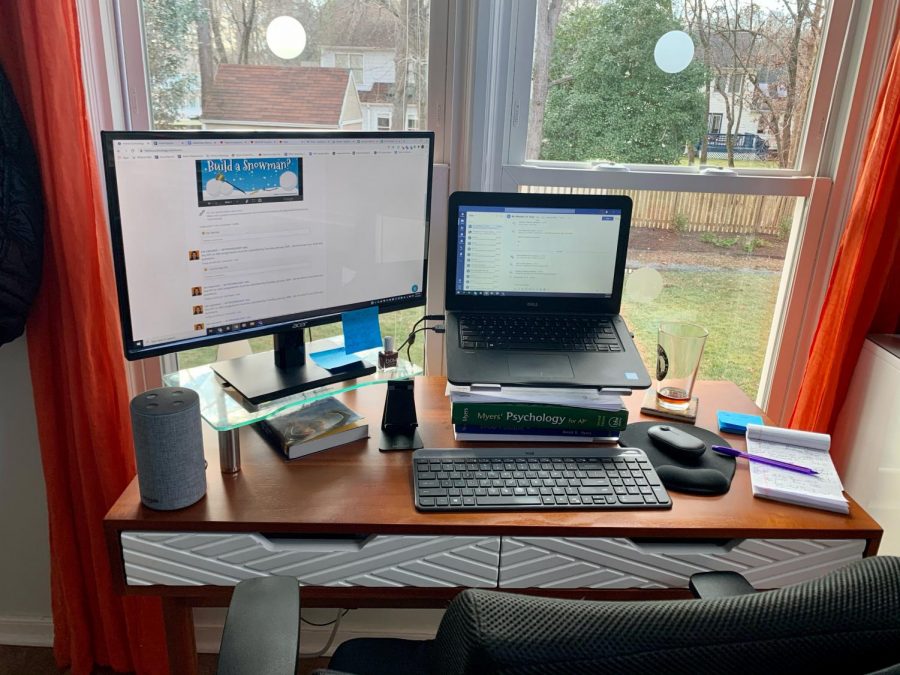School away from school: the teachers’ perspective
March 2, 2021
Eight hours a day, students are sitting in front of a computer learning new material, to then spend additional time on homework, studying for quizzes and tests, and working on projects. Altogether, this can easily add up to 50 or more hours a week, but how many of us have thought about how much time our teachers are putting in during this time of virtual learning?
Imagine being a teacher in a “normal” year: any responsibilities are assigned to you, you must create material, teach in a way that everyone can fully understand, grade classwork, and then meet with students who are struggling. When surveyed, teachers at Deep Run reported working about an average of about 55-60 hours per week. Spanish II and IV teacher Shannon Brown agreed that the workload this year was even harder than in previous years.
“Having to convert items to teach remotely takes time. Also, having to track down students who fail to complete work and or attend class, as well as contacting their parents is very time-consuming. Most teachers have 150-plus students,” Brown said.
With all the time spent preparing for classes and grading homework, all of the teachers interviewed agreed it is very difficult to find time for family or personal time after meeting the demands of teaching. Kareem Texler, a math teacher, faces the unique challenge of helping to raise a 9-month-old baby, along with a newly grueling school schedule.
“It is very hard to find time for my family and myself other than just watching TV in the evening. I usually have schoolwork to do in the evenings and weekends, so I sacrifice sleep time so I have more time to get things done,” Texler said.
There do seem to be some positive aspects to the new learning environment. AP Psychology and leadership teacher, Catherine Latcovich feels like this new challenge has provided some interesting lessons.
“I’ve learned that some students are really thriving in the online environment and that they may want to continue with online classes. It has also helped me create quality content and practice activities that I will be using next year in my face-to-face

classes,” Latcovich said.
The average teacher has faced many new challenges in the 2020 school year, just as the average student has. Most teachers have found this experience to be a mixture of challenges to overcome and opportunities for growth. Students should keep this in perspective and recognize that as students we aren’t so different from those who teach us.











